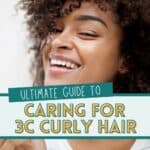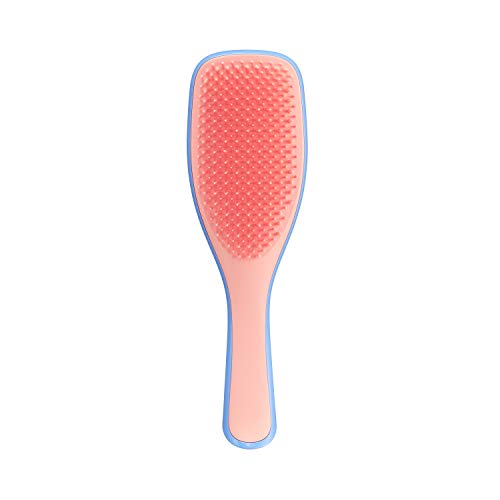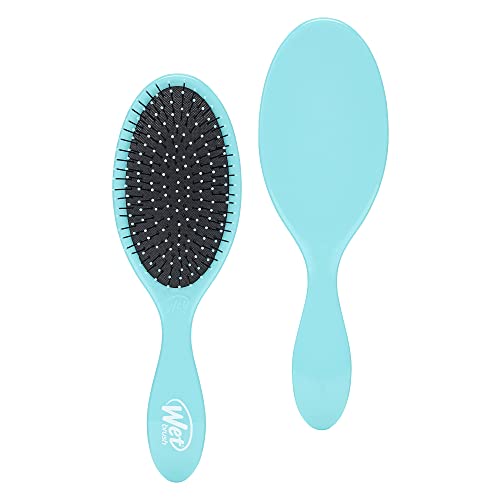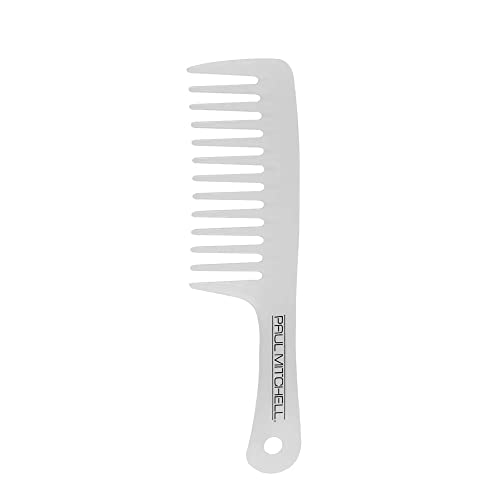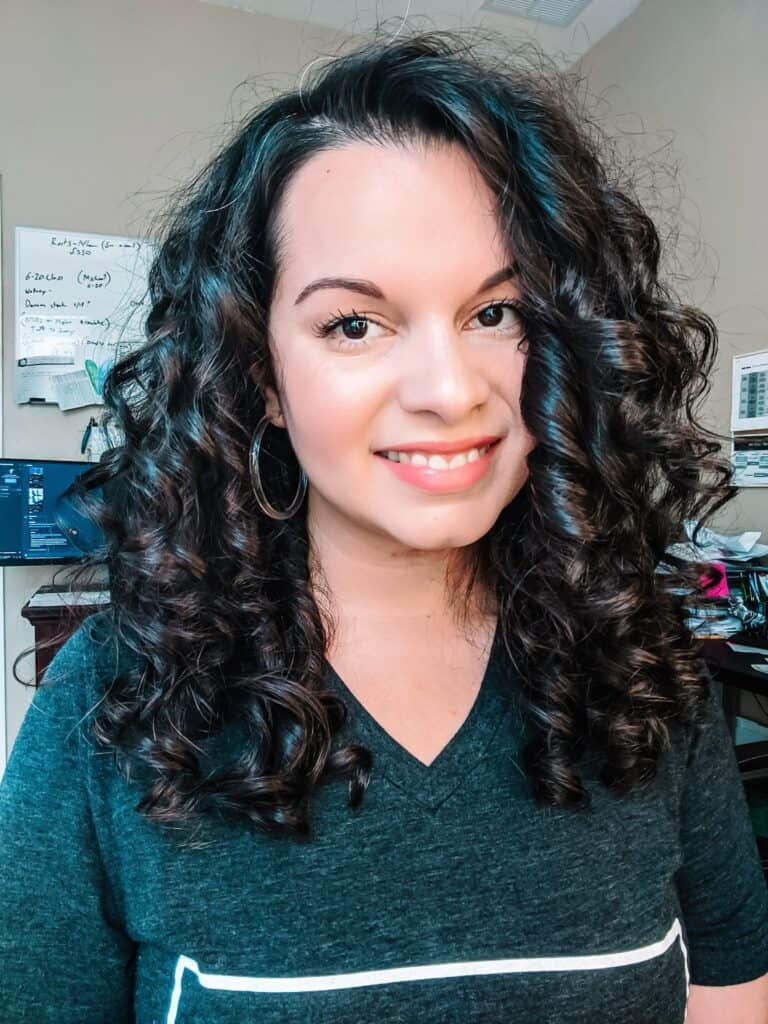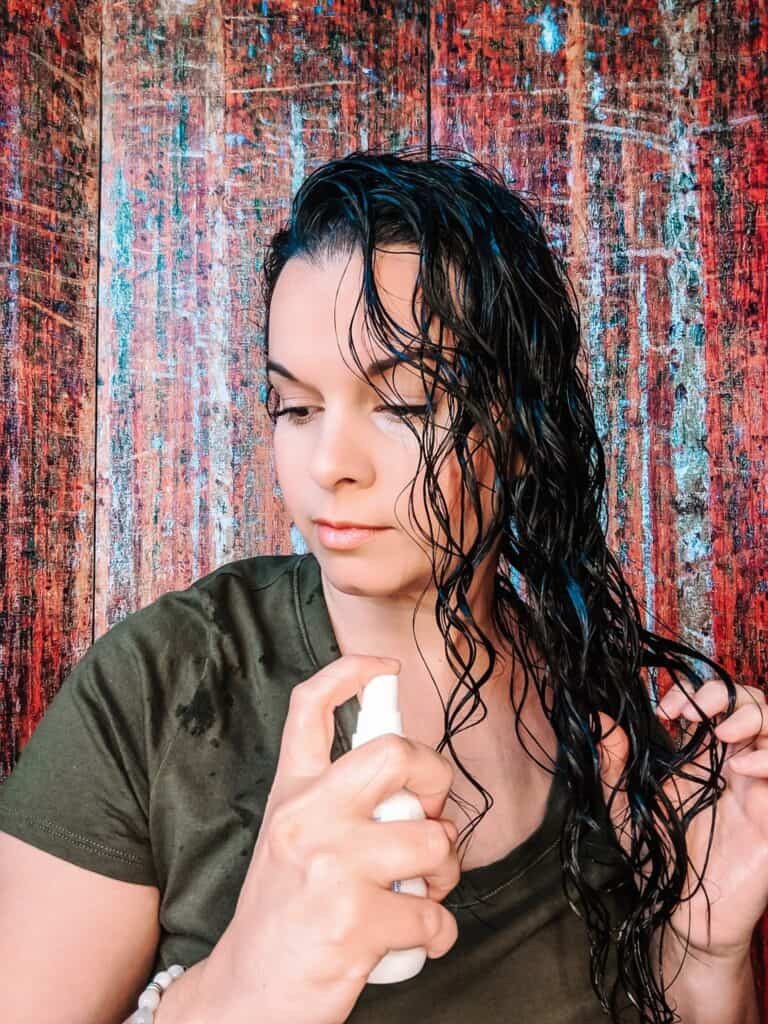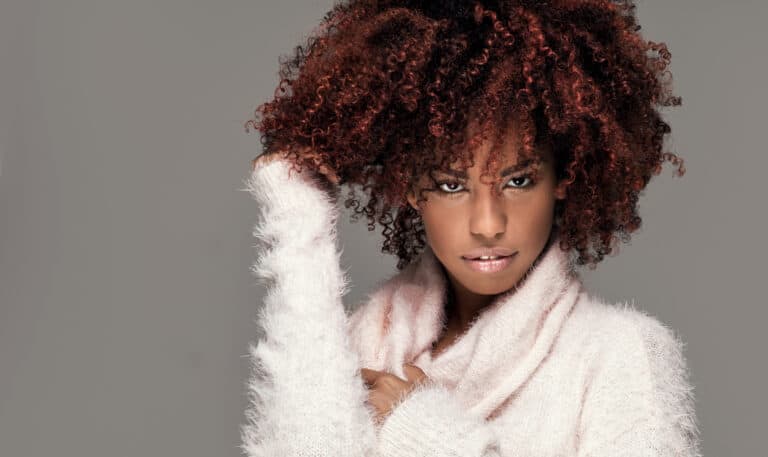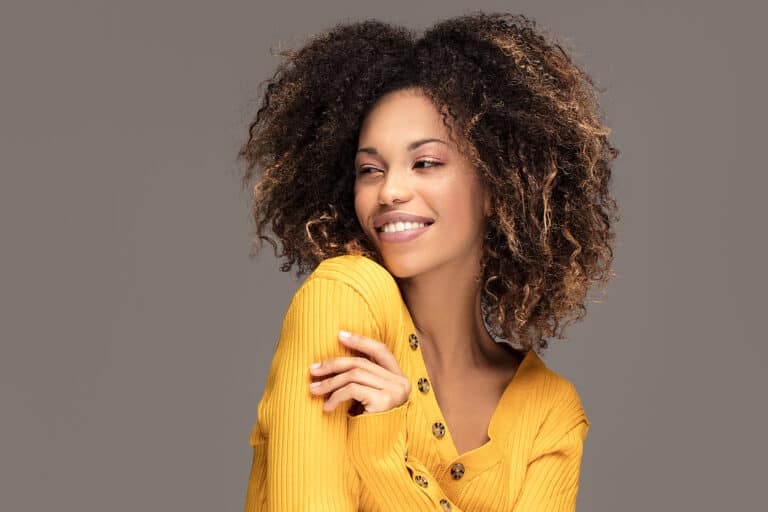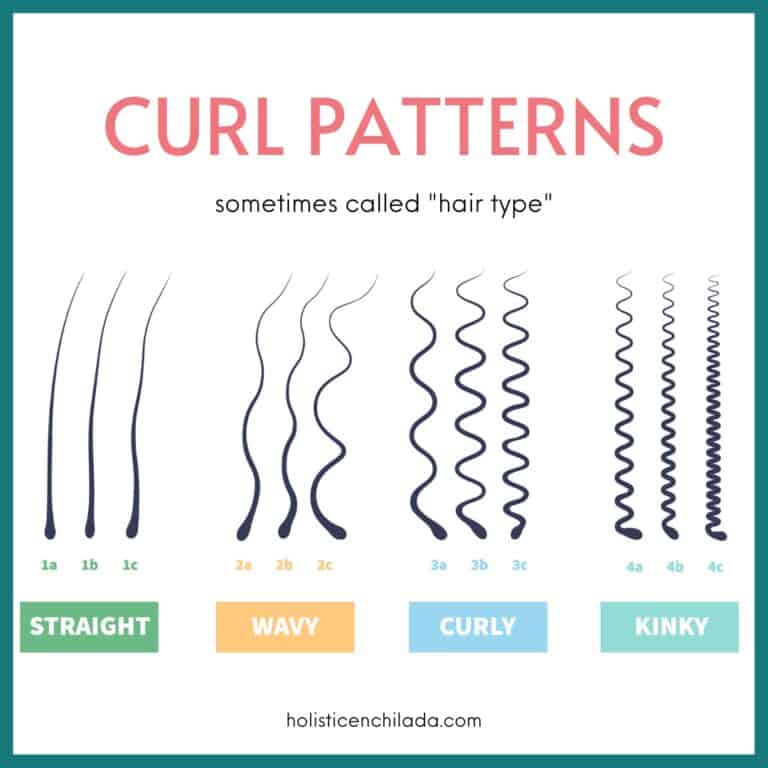3C Hair Type: What Is It and How Do You Care For It?
This post may contain affiliate links, and I will earn a commission if you purchase through these links. Please read the disclosure policy for more details.
Identifying your hair type is one of the most important things you can do for good hair health. Once you know which hair type you have, it’s much easier to choose the best products to look after your curls properly.
If you’re wondering, ‘what hair type do I have?’, you’re not alone. It can be tricky to work out your natural hair type, especially if you have one of the curly or coily hair types. But our guide will help you to decode your curl type.
Once you know your hair type, porosity, and density, it’s easier to understand the best way to care for your curls. So read on to discover how to tell if you have 3C hair, how to care for it, and the best products for 3C hair.
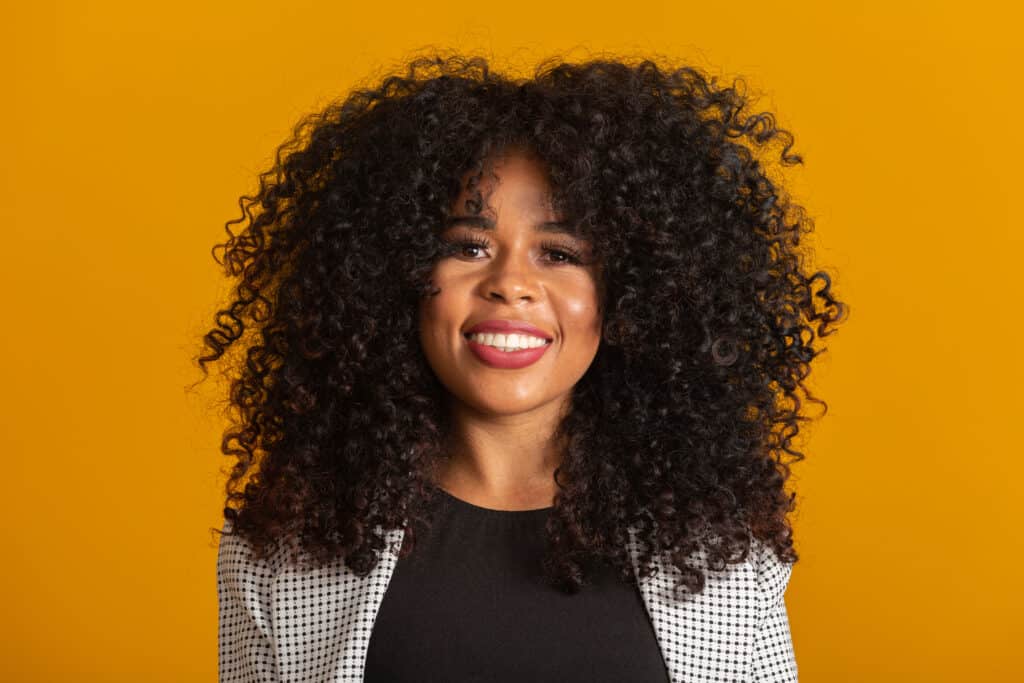
What Is the 3c Hair Type?
The Andre Walker Hair Typing System categorizes straight hair as Type 1, wavy hair as Type 2, The Andre Walker Hair Typing System categorizes straight hair as Type 1, wavy hair as Type 2, curly hair as Type 3, and coily hair as Type 4. The letters describe how tightly the curls are formed: A has the loosest curls and C has the tightest curl pattern.
3C is the last curly hair type, but all curly hair types above type 3B share some similarities, so 3C hair can look a little like 3B or 4A hair. It’s also common to have a mix of curl types which means that type 3C hair may have a few 3B or 4A strands mixed in.
3C hair has plenty of volume and spring, with curls about the width of a pencil or straw. The strands have a classic corkscrew curl shape, and a clear S-shaped curl that remains even after they are stretched. You may have fine, medium, or coarse hair or a mix of hair textures.
You’ll also find that 3C hair is prone to dryness, frizz, and damage because your natural oils struggle to travel down the entire length of the ringlets. The curves and bends in 3C curls also cause more shrinkage than in many other hair types.
This natural hair type is also prone to trichonodosis, the scientific name for fairy knots. This happens when a single strand gets tangled up with itself and is more likely to occur with curly or coily hair types. Fairy knots cause breakage, but you can prevent this by following the care tips below.
3c Hair vs Other Hair Types
It can sometimes be tricky to be sure if you have the 3C hair type or one of its closest neighbors.
3B hair has loose curls compared to 3C hair, while Type 4A hair has tight coils about the same circumference as a crochet needle. Type 4A curls have better curl definition than Type 3C and they also experience more shrinkage.
How to Care For 3c Hair
3C hair needs careful attention, but with a little effort, you can achieve a beautiful mass of soft and defined curls.
You may need to make a few changes to your care routine, and you’ll also need to determine if your hair has high or low porosity. Our Ultimate Guide to Hair Porosity will help you to decide which you have.
High-porosity hair absorbs moisture easily but struggles to retain moisture, so a hydrating lotion or leave-in moisturizing gel is a great choice. On the other hand, moisture tends to sit on the surface of low-porosity hair so avoid heavy oils and butters as they can cause product build-up.
It might take a while before you see an improvement in your curls, so stick with your 3C haircare routine. But if you notice something isn’t working, feel free to try something different.
Here are some handy tips to help you care for 3C hair:
Cleanse your 3C Hair Regularly
Some people prefer to wash 3C hair once a week, while others prefer to wash twice or three times per week.
However often you choose to wash your hair, it’s essential to avoid sulfates, which can make your 3C hair even drier. So look for a moisturizing shampoo which is also sulfate-free. This will remove dirt and product residue without stripping away the natural oils that keep your scalp and hair healthy.
You could also try co-washing, which uses a regular conditioner or co-wash instead of shampoo. But this might not be suitable for low-porosity hair, which needs thorough cleansing to avoid product build-up.
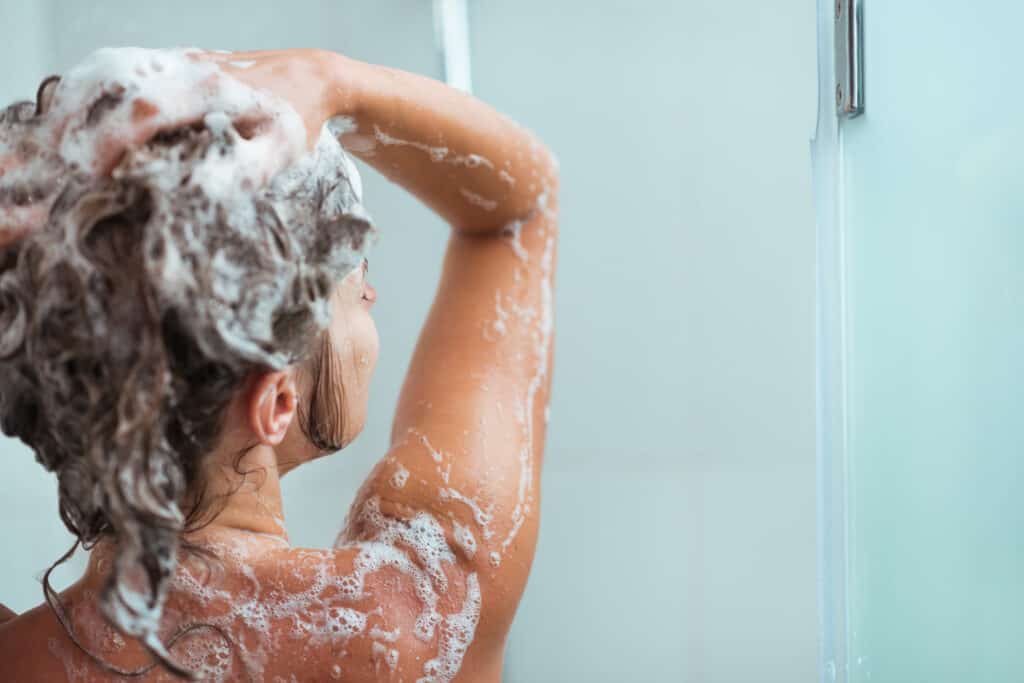
Add Moisture
Curly hair can struggle with moisture retention and the curlier your hair, the drier it is likely to be.
That’s because the shape of your ringlets stops your scalp’s natural oils from reaching the full length of the hair strand. Adding moisture to your hair is vital for good hair health, so every 3c hair routine needs to include high-quality moisturizing products.
Using a leave-in conditioner regularly will improve daily hydration, but don’t use one that contains hydrolyzed protein too frequently, as this can add to product build-up.
A regular deep conditioner will drench your hair strands with moisture, especially if you incorporate heat or steam into your deep conditioning treatment. Hair oils absorb well into the strands, so look for products containing ingredients like jojoba, avocado, or castor oil.
And a curl cream is fantastic for reducing frizz and defining your curl pattern.
The Right Brush
A good brush can define curls and really make them pop. But it’s important to choose the right hairbrush and avoid brushing your hair when it’s dry, as this causes frizz.
So give the boar-bristle brushes a miss and instead go for a detangling brush with nylon bristles and soft tips.
Read more: How To Detangle Curly Hair
Heatless Styling Techniques
3C natural hair tends to be dry, and excessive exposure to heat and chemicals can affect curl patterns. The only way to remedy this is to cut your damaged locks, so avoiding hot styling tools as much as possible is essential.
Air drying is best for your 3C curls, but if you want to use your blow dryer, attach a good diffuser and use a heat protectant before heat styling. Heatless styling methods like CurlFormers and banding can reduce shrinkage without using flat irons.
If you really must reach for the flat iron, it’s important to try and minimize heat damage. So avoid the highest setting but be sure to choose a temperature that will straighten your hair in one pass.
Proper Trims and Cuts
Regular trims are essential for healthy hair growth and will help to restore the natural curl pattern to damaged locks. Scheduling a trim every 8-10 weeks is fine for most people.
Don’t be tempted to miss regular trims just because you want to retain length on your locks. The dry, split ends will gradually split further up the hair shaft, causing breakage and eventually making a drastic chop necessary.
And be sure to see a curl specialist to cut your hair for the best shape.
Read more: Ultimate Guide to Getting A Curly Hair Cut
Pineappling
Curly hair is easily damaged while you’re asleep, but taking good care of your locks can avoid tangling and breakage. So before you go to sleep, gather your curls up in a high pineapple on top of your head.
This will protect your hair from damage and also keep your style looking great for longer.
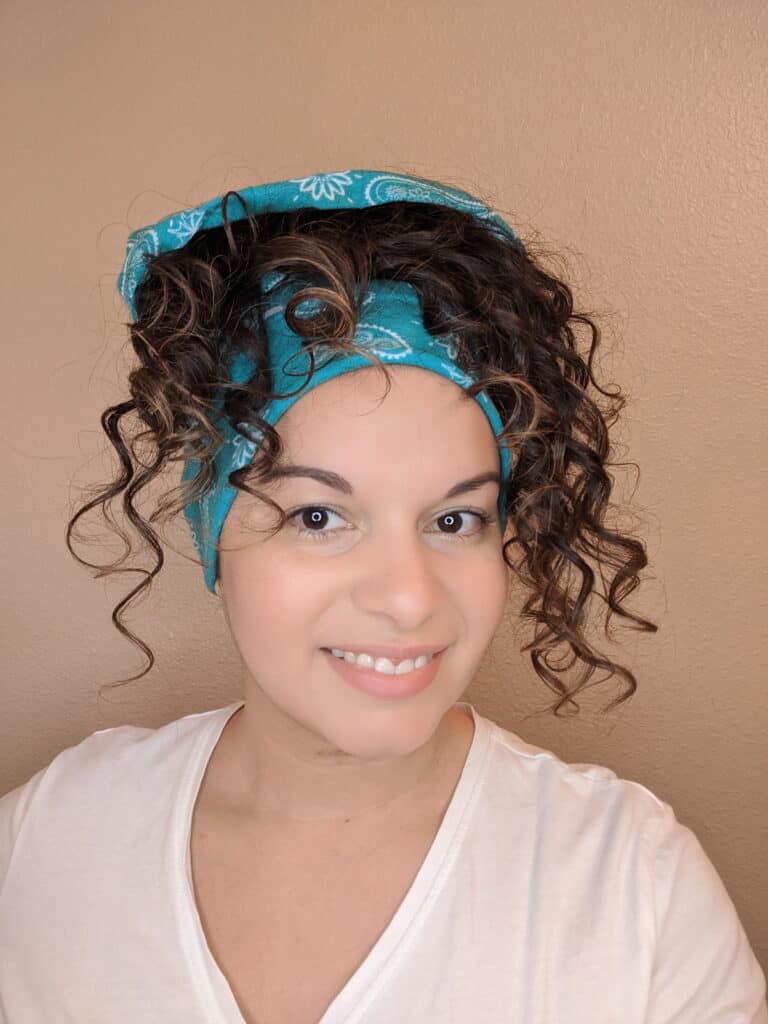
Sleep Protective Gear
You can also protect your curls even more by sleeping with your hair in a silk or satin bonnet or wrapping it in a silk scarf. Sleeping on a satin or silk pillowcase is another great way to protect your hair overnight.
This works well because silk doesn’t absorb moisture the same way that cotton materials do. The silky texture of the fabric also produces less friction, which cuts down on tangles and frizz.
Be sure to choose pure silk because the manufactured silk-like fabrics won’t work in the same way.
Read more: How To Sleep With Curly Hair
Handle with Care
It might be hard to resist playing with your ringlets, but your 3c curls are more fragile than other type 3 hair. Twisting and pulling the strands can easily cause breakage and frizz, so handle them with care.
Detangling is easier on wet hair, and this is one time when it’s OK to run your fingers through your hair. But be sure to saturate your hair with a detangler or conditioner first so that your fingers glide easily through the strands.
Classifying Different Types of 3C Hair Textures
As well as knowing your hair type and porosity, it’s also important to know your hair texture.
Hair texture types describe the width of each hair, rather than how many you have. So you could have very fine hair but a lot of it, so it looks voluminous despite its fine texture.
3C hair can be fine, medium, or coarse, and knowing which you have will help you to choose the right products to care for it.
How to tell if you have Fine, Medium, or Coarse 3C Hair texture
You can test to see if your hair is fine, medium, or coarse by rolling a single strand of hair between your fingers:
- If you have fine hair, it’ll be difficult to even feel the strand at all
- If you can feel the strand, you have medium hair
- If you can feel a thick strand about the width of a piece of sewing cotton, you have coarse hair
Fine hair can easily be weighed down with product residue, so you’ll need to select lightweight products that won’t cause a build-up. Coarse hair needs careful attention to stop it from looking dry and frizzy; see our Guide to Coarse Hair for more care tips.
Cuts and Hairstyles for 3C Hair
Styling 3C curly hair can take a little extra time and effort, but it’ll be worth it when you see your beautiful ringlets.
It’s crucial to pick the right products, and some great styling products to add to your 3C haircare routine include:
- Shea Moisture Coconut and Hibiscus Curl Enhancing Smoothie
- Shea Moisture Jamaican Black Castor Oil Styling Lotion
- Eco Style Coconut Oil Styling Gel
Try to avoid excessive heat exposure as much as possible. If you must use your blow dryer or hot styling tools, apply a good heat protectant first and use as little heat as possible.
Protective styles are ideal for giving your curls a break every now and then, and also help to retain curl definition. Just be careful not to choose a protective style that is too tight, as these can damage your cuticles and hairline. Buns, updos, and twists are great protective styles for long 3C hair.
- Wash and Go – an excellent option for beautiful curls. Focus on applying the right products to your ringlets.
- Top Bun – ideal for days when you can’t be bothered to do much to your hair. It will stop you from messing with your curls as well!
- Half Up-do – perfect when you don’t want to tie back all your beautiful curls. 3C hair tends to be thick, so it’ll still look fantastic with half of it pulled back.
The Best 3C Hair Products
High-quality products are essential if you want your hair to look its best. so here’s a selection of the best 3C curly hair products:
Shea Moisture Silicone Free Shampoo for Dry Hair
Cleansing your curly hair is essential to remove dirt and oils from the strands, but you need a shampoo that won’t strip natural moisture. This sulfate-free shampoo contains natural ingredients like meadowfoam seed and phyto-proteins, to leave your hair looking healthy and smooth.
Jessicurl Hair Cleansing Cream
If you’d like to try co-washing 3C hair, you’ll need a conditioner or co-wash that is moisturizing and sulfate-free. This cleansing cream contains gentle surfactants to remove oils from your hair without stripping it, while lightweight moisturizing ingredients like avocado and glycerin hydrate without weighing down your hair.
Camille Rose Curl Love Moisture Milk
This leave-in conditioning milk will leave your curls feeling soft and moisturized. It contains gentle conditioning ingredients like macadamia oil and rice milk, plus slippery elm bark which softens and smooths the strands to make detangling easier. You can also use this product as a curl refresher to keep your curls looking great until next wash day.
TWIST Boss Bounce Light as Air Buildable Styling Cream
This silicone-free styling cream contains shea butter, jojoba oil, and patua fruit oil to banish frizz while also hydrating and softening your hair.
TWIST Boss Bounce is cruelty-free and contains no silicones, sulfates, or parabens. You can use it daily to hydrate your locks and smooth flyaways and split ends.
Maui Moisture Heal & Hydrate + Shea Butter Mask
This rich hair mask contains a rich hydrating blend of shea butter, aloe vera, macadamia oil, and coconut oil. This nourishes dry hair, adding moisture and helping to seal split ends. You can use this vegan parabens- and silicone-free conditioner as an in-shower mask for intense hydration or as a daily leave-in conditioner.
Ideal for coarse hair, this intense hair mask moisturizes and nourishes dry, damaged hair.
Maui Moisture Curl Quench + Coconut Oil Ultra-Hold Gel
A good gel will help your style last longer than a dew hours. The Maui Moisture Curl Quench Gel is moisturizing enough to hydrate your curls for days, along with hold to prevent frizz.
Maui Moisture Curl Quench Gel contains aloe vera and a blend of coconut oil, papaya extract and plumeria extract to give a natural, flake-free hold.
Mielle Organics Rosemary Mint Oil
A lightweight oil that nourishes and smooths your hair for a healthy, shiny finish. It contains a blend of over 30 essential oils and biotin to strengthen, nourish and protect your curls. You can use it as part of your daily care routine or as an intensive deep conditioner. It’s suitable for sensitive skin, chemically-treated hair, and both low- and high-porosity hair.
TWIST Hit Reset Light Clarifying Shampoo
It’s always a good idea to clarify on a regular basis to avoid buildup, especially for coarse and low porosity hair types.
The TWIST Hit Reset shampoo is a great light clarifying shampoo for all curl types. It won’t dry out your curls and can be used as often as needed.
FAQs
Still got questions about how to care for 3C hair? Here are some of your most frequently asked questions:
How Do You Properly Apply Products to 3c Hair?
It’s generally best to comb or finger-rake conditioners through 3C hair, then you can apply styling products with praying hands. You could also try two other techniques called shingling and plopping.
Shingling is a technique for applying a curl cream, gel, or leave-in conditioner, where you separate your curls with your fingers and smooth the product onto each curl.
The plopping method involves applying your hair product to wet or damp hair and then gathering your waves, curls, or coils at the top of your head. Then you wrap them up in a microfiber towel or an old t-shirt to protect your 3C curl pattern as your hair dries.
This method cuts down on drying time and is gentler than a blow dryer, so your curls will look healthier and more defined.
Does the Curly Girl Method Work With 3c Hair?
The Curly Girl Method is fantastic for 3C curls, so if you have this hair type, it’d definitely be worth trying it out.
Not sure how to use the Curly Girl Method? Our Ultimate Beginner’s Guide to the Curly Girl Method has all the info you need!
The Bottom Line to the 3c Hair Type
Now you have all the information you need to tell if your natural curls are type 3C. We’ve explained the best way to look after your 3c curls, how to style 3c hair, and the best products for 3C hair.
Caring for 3C curls can be tricky, and if you want your 3C hair to look great, it’s essential to consider the porosity of your hair as well as your hair texture. But as long as you give your curls a lot of love, and plenty of moisture, you’ll be rewarded with shiny, springy curls that look fantastic!
Please do me a favor and share this post to social media, as it helps me grow my audience and spread the word about our curly hair movement! And remember to subscribe to my YouTube Channel for more curly hair tips and product recommendations. Thanks!
Want to remember this? Save 3C Hair Type: What Is It and How Do You Care For It? to your favorite Pinterest board!


